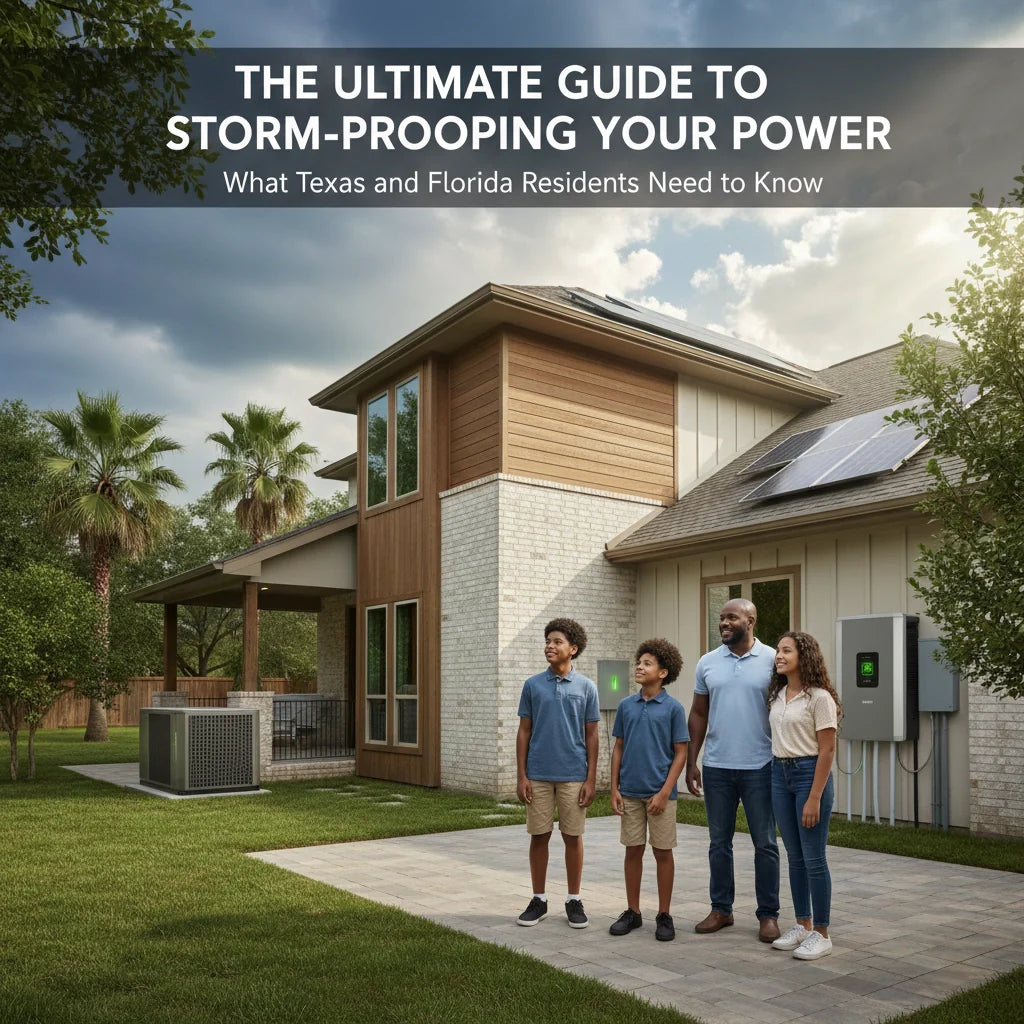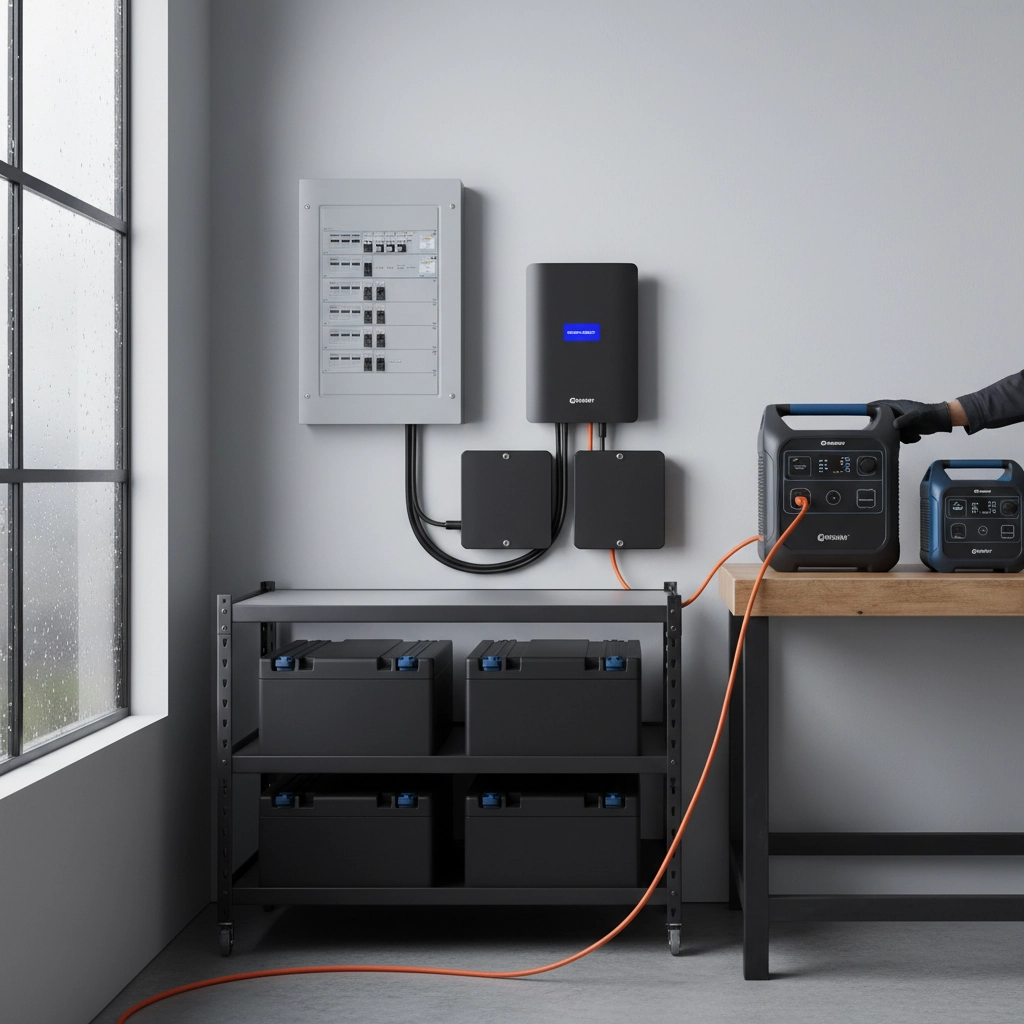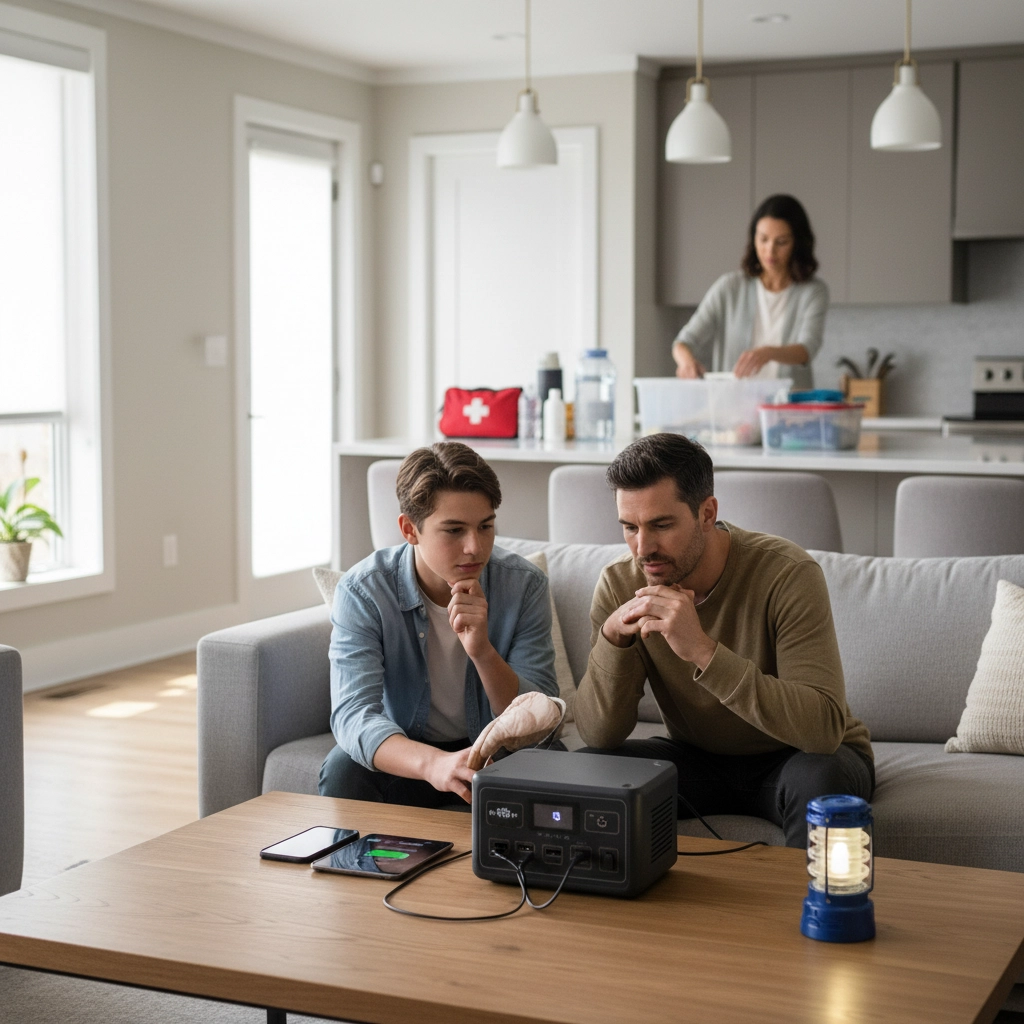
The Ultimate Guide to Storm-Proofing Your Power: What Texas and Florida Residents Need to Know
Share
Living in Texas or Florida means dealing with some of the most unpredictable and severe weather in the country. From hurricane season in Florida to winter freezes and summer heat waves in Texas, both states face unique challenges that can devastate electrical infrastructure and leave residents without power for days or even weeks.
The harsh reality? No electrical grid can withstand the full force of nature's most extreme events. But that doesn't mean you're powerless to protect yourself, your family, and your essential devices when the lights go out.
Understanding Your Regional Grid Vulnerabilities
Texas: Isolated and Overwhelmed
Texas operates on its own electrical grid: essentially an island of power that's largely disconnected from neighboring states. While this independence has its benefits, it creates serious limitations during emergencies. When demand spikes during a heat wave or winter freeze, Texas can't easily import power from other regions to make up the difference.
The state's grid lacks substantial buffer capacity. Most infrastructure sits idle during normal conditions because maintaining excess capacity is expensive. But when millions of Texans crank up their air conditioning during a heat wave or turn on electric heaters during a freeze, the system gets pushed to its breaking point.
Recent winter storms have exposed these vulnerabilities dramatically, leaving millions without power due to inadequate preparation and limited resilience planning.
Florida: Hurricane Alley's Power Challenges
Florida's power grid faces a different but equally challenging set of threats. Hurricanes bring devastating winds, torrential rain, and flooding that can knock out power lines, flood substations, and damage transformers. The state's vulnerability to these annual weather events, combined with rising energy demands from population growth, creates a critical need for enhanced electrical grid resilience.

Beyond weather, Florida's infrastructure also faces mounting risks from cyber threats and supply chain disruptions. Without proper investment in grid infrastructure, power outages become more frequent, longer-lasting, and increasingly costly.
The Infrastructure Reality Check
Here's the truth that utility companies don't always emphasize: hurricane-proof grids don't exist. No electrical system anywhere in the United States can withstand the full force of a Category 4 or 5 hurricane without experiencing significant outages.
Burying power lines underground might seem like an obvious solution, but it comes with enormous costs: often thousands to millions of dollars per mile. Even worse, flood surges can still damage buried lines, and they do nothing to protect the substations and transformers that are critical to keeping the power flowing.
This means that regardless of where you live in Texas or Florida, you need to be prepared for extended power outages.
Your Personal Power Protection Strategy
Since you can't rely on the grid to be hurricane-proof or freeze-proof, your best defense is creating your own reliable backup power system. Here's how to build a comprehensive power protection plan:
Uninterruptible Power Supply (UPS) Systems
A quality UPS system serves as your first line of defense against power interruptions. These devices provide immediate backup power when the grid goes down, giving you precious time to save work, safely shut down equipment, or switch to longer-term backup solutions.
For Texas residents dealing with frequent brownouts and power fluctuations during extreme weather, a UPS system protects sensitive electronics from voltage spikes and drops that can cause permanent damage. Florida homeowners benefit from the same protection during the frequent afternoon thunderstorms that plague the state year-round.
When shopping for UPS systems, look for models that offer:
- Pure sine wave output to protect sensitive electronics
- Automatic voltage regulation to handle power fluctuations
- Multiple battery backup outlets for essential devices
- User-replaceable batteries for long-term cost savings
Extended Battery Backup Solutions
Standard UPS systems typically provide 15-30 minutes of backup power: enough for a brief outage but not nearly sufficient for the multi-day outages common during major storms. This is where extended battery packs become essential.

External battery packs can extend your backup power runtime from minutes to hours or even days, depending on your power consumption. For critical applications like medical devices, home security systems, or communication equipment, this extended runtime can be literally life-saving.
Consider your essential power needs:
- Medical equipment (CPAP machines, oxygen concentrators, refrigerated medications)
- Communication devices (cell phones, internet equipment, radios)
- Safety systems (security cameras, alarm systems, garage door openers)
- Food preservation (refrigerator and freezer protection)
Portable Power Stations
Modern portable power stations have revolutionized personal backup power. These large-capacity battery systems can power everything from laptops and phones to small appliances and LED lighting for extended periods.
Unlike traditional gas generators, portable power stations:
- Operate silently without disturbing neighbors
- Produce zero emissions, making them safe for indoor use
- Require no fuel storage or maintenance
- Can be recharged via solar panels for sustainable operation
Emergency Preparedness Beyond Power
Your storm-proofing strategy should extend beyond just backup power. Create a comprehensive emergency plan that accounts for extended outages:
Essential Supplies Checklist
- Water: One gallon per person per day for at least three days
- Non-perishable food: Three-day supply that doesn't require cooking
- Lighting: Battery-powered flashlights and lanterns with extra batteries
- Communication: Battery-powered or hand-crank radio
- First aid: Well-stocked medical kit with prescription medications
- Cash: ATMs may be down during extended outages
Home Preparation
Before storm season arrives, take steps to minimize power-related risks:
- Trim trees near power lines and your home
- Install surge protectors on major appliances
- Secure outdoor items that could become projectiles
- Check and clear gutters to prevent water damage
- Test backup power systems regularly

Long-Term Resilience Planning
Smart Energy Consumption
During extreme weather events, your energy usage habits can significantly impact both grid stability and your backup power runtime. Simple changes like setting thermostats higher during summer heat waves or lower during winter storms reduce strain on both the electrical system and your backup batteries.
Regular Maintenance
Backup power systems require regular maintenance to perform when you need them most. This includes:
- Testing UPS systems monthly to ensure batteries hold charge
- Replacing UPS batteries every 3-5 years
- Cleaning dust from cooling vents and fans
- Updating firmware on smart UPS systems
- Checking connections for corrosion or looseness
Professional Assessment
Consider having a professional evaluate your specific power protection needs. Factors like home size, essential equipment, and local utility reliability all influence the best backup power strategy for your situation.
State-Specific Considerations
Texas Residents
Focus on solutions that handle both extreme heat and cold. Summer heat waves can last for weeks, requiring extended backup power capability. Winter freezes, while less frequent, can be devastating and last for days. Your backup power system should be rated for temperature extremes and have sufficient capacity for heating or cooling loads.
Florida Residents
Hurricane season runs from June through November, requiring preparation well before the first storm forms. Your backup power strategy should account for potential flooding, so keep equipment elevated and protected from water damage. Consider portable solutions that can be moved to higher ground if necessary.
Taking Action Today
Don't wait until a storm is approaching to start thinking about power protection. The time to prepare is now, when you can make thoughtful decisions and have equipment properly installed and tested.
Start with a realistic assessment of your essential power needs, then build a layered approach using UPS systems, extended batteries, and portable power stations. Remember, the goal isn't to maintain your normal lifestyle during an outage: it's to keep essential systems running and your family safe and comfortable.
Ready to storm-proof your power? Contact our team at Ace Real Time Solutions for a personalized power protection consultation. Our experts can help you design a backup power system that keeps your Texas or Florida home prepared for whatever Mother Nature brings your way.
The next major storm is coming: the only question is whether you'll be ready for it.
